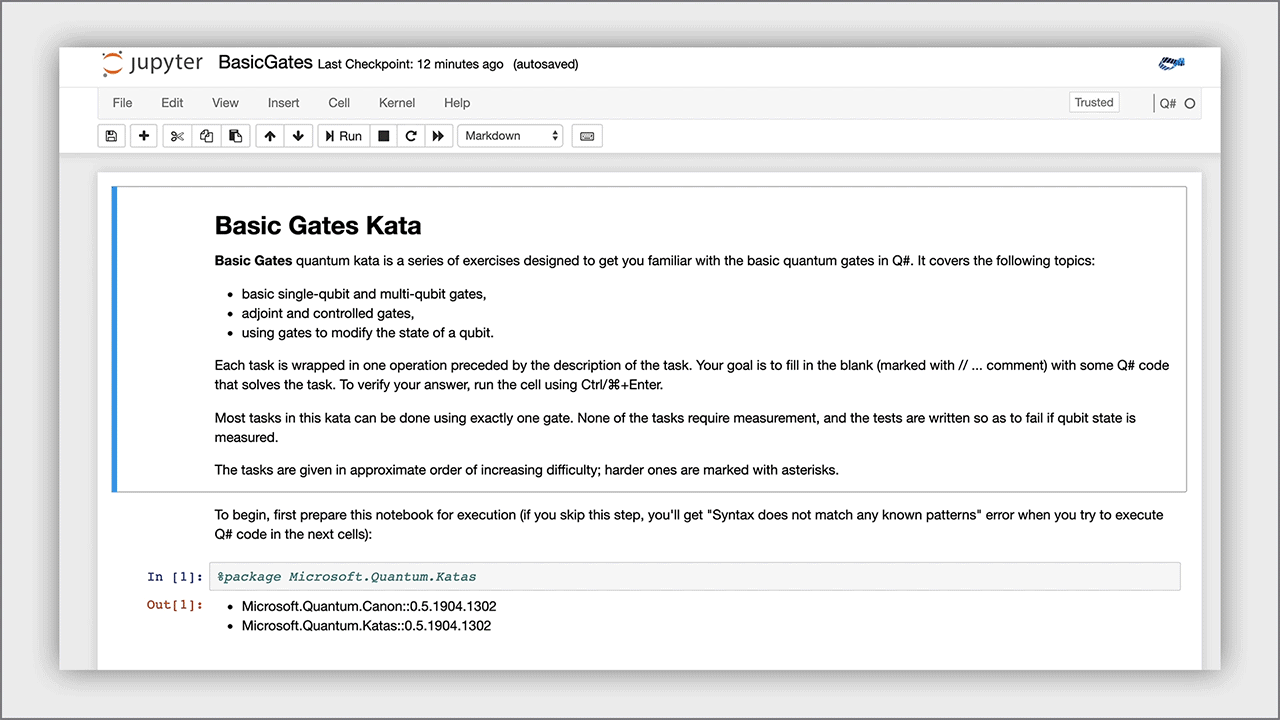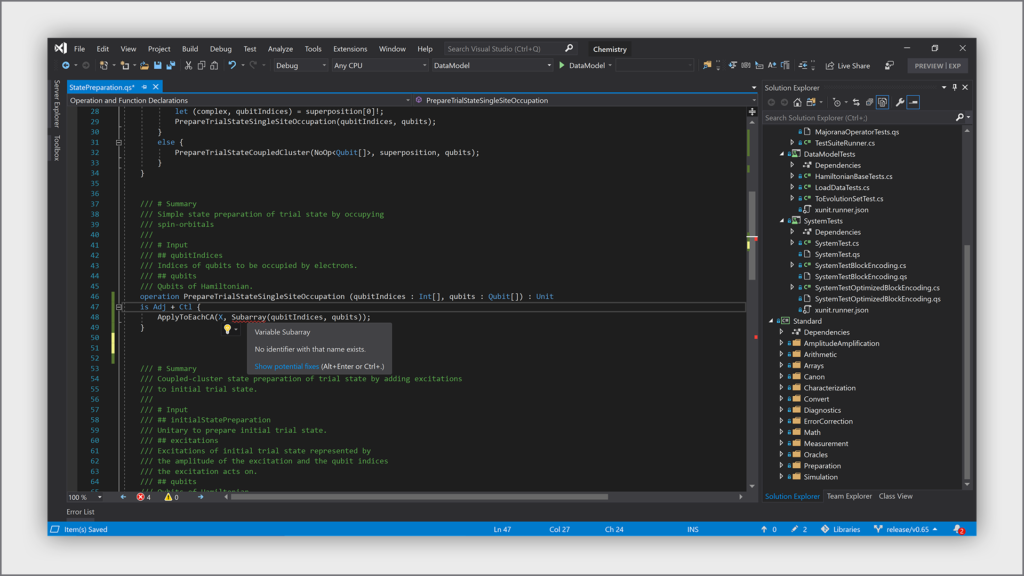With the most recent Quantum Development Kit release, we’ve focused on empowering our users to get engaged with quantum development. The new release:
- Makes it easier to learn quantum computing with the quantum katas notebooks.
- Adds more consistent and concise Q# syntax.
- Refactors to focus on helping users find what they want and contribute their code.
Building upon the Jupyter Notebook integration that we shared with you last month, we now extend the support to our quantum katas – self-paced tutorials on quantum computing. Today’s update means that new Q# developers can experience our self-paced learning tools without having to install the Quantum Development Kit. With this update, we’ve made quantum programming approachable for people with any level of experience.

You can try out the kata notebook yourself hosted online, or you can also find a list of other kata notebooks for you to try at our open source Quantum Katas repository.
Q# makes it easy to think in terms of quantum algorithms and quantum applications. As we continue to evolve the world’s first high-level quantum programming language to meet the needs of scalable quantum program development, we’re also taking the opportunity to make it even easier to express quantum algorithms in Q#.
With this release, we are adding new capabilities to the Q# language itself. For example, we added an operator “w/”, a new way to express array creation as a modification of an existing array. We have also added a shorthand way to express specializations of quantum operations (e.g.: Controlled and Adjoint) and new shorthand, (e.g.:, “w/=, +=) for common statements. These changes not only improve the developer’s ability to express quantum algorithms, but they will also lead to more efficient code generation on quantum devices.
Visual Studio and Visual Studio code users will also now see the familiar light bulb icon that recommends fixes for build problems.

We have optimized the layout of our libraries to enable the exciting growth that we are seeing from our team and the larger quantum community. As more developers contribute their ideas and Q# code, the new layout helps developers learn and re-use code faster. Learn about these and other new features in the Quantum Development Kit update release notes.
Finally, please take a look at our developer blog this week as we publish a series of more in-depth blogs about each of these new capabilities.
